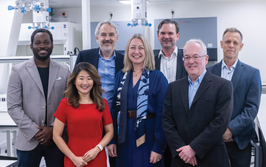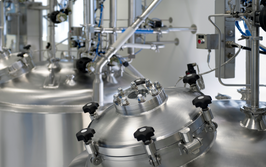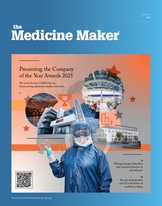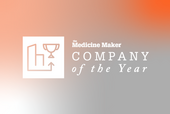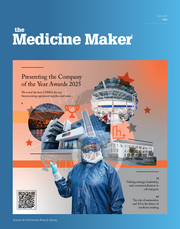Viral Vectors in Vogue
We must collaborate to address stability challenges in viral vector manufacturing
Arvind Srivastava | | Opinion

Rapid advances in cell and gene therapy development have led to new approvals, but commercialization has introduced a whole raft of new challenges. How do we produce these therapies safely, cost-effectively, and in time to meet growing global health needs? Stable, safe workflows for viral vector processes are critical; after all, the vector is the delivery mechanism for the therapy. The vector manufacturing process includes vector amplification, expansion and purification steps, followed by fill and finish.
Over time, vectors may undergo undesirable changes, such as aggregation, unfolding, surface absorption, oxidation and deamidation during storage, shipping and handling, which can cause the vector to fail in properly delivering the therapeutic (1, 2). Manufacturers – and the companies that supply critical raw materials to them – must examine how viral vector stability can be affected, and then consider how to solve these challenges to ultimately improve the end product delivered to the patient.
Vectors can cross-link through host cell proteins and DNA on the viral surface, forming aggregates that can cause the vectors to lose therapeutic efficacy and lead to unwanted immune response (2). Aggregates can also increase the viscosity of the vector solution, making it more difficult to load the vector into syringes and inject the material (3).Aggregation can be addressed with an endonuclease treatment, used to minimize the host cell proteins and DNA-mediated vector aggregates during downstream manufacturing processes (2), or with excipients added to processing steps to reduce viscosity (4).
Vectors can also lose the ability to perform their primary function in cell and gene therapy treatment: delivering the therapeutic load to the target cells in the patient. This vector stability challenge has been shown to be related to environmental conditions. For example, viral vectors stored in PBS formulations and held at room temperature for three days were 50 percent less efficient in delivering a therapeutic payload (1). High purity sugars and PEG for vector formulations are materials now offered by many excipient manufacturers (5), which can also be used to combat efficacy challenges (1). Refrigeration can also help solve aggregation and infectivity loss challenges. In another study, the stability of an investigational product was reported to be significantly better at -70 °C than -20 °C and 5 °C (2). Another environmental issue to consider is how vectors can oxidize upon exposure to light or due to metal ion impurities in the raw materials and excipients used to manufacture the viral vector (3). Methionine has shown to significantly reduce the infectivity loss in an adeno-associated virus 5 when stored at 37 °C (3). Infectivity can also be reduced by the presence of free-radical scavenger supplements (6).
Viral vector manufacturers, if they are not already closely managing pH levels, need to pay attention, as the pH and ionic strength of vector formulations can also impact vector stability and infectivity. For example, the infectivity study of adenovirus type 5 at 15 °C demonstrated its lowest infectivity loss between pH 6.0 and 7.6 (6). Other studies have demonstrated effectiveness of salts; for example, >200 mM of a salt, such as magnesium sulfate, sodium citrate, sodium chloride, sodium phosphate or sodium sulfate was shown to significantly reduce vector aggregation in one study (2). The study further shows that a multivalent salt, like magnesium sulfate, was even more efficient than a monovalent salt, such as sodium chloride (2).
Conditions within formulations can also cause instability in viral vectors. Vectors can unfold, aggregate or even precipitate upon shear stress. A study was conducted to assess AAV2 vector recovery in the presence and absence of a nonionic surfactant. The vector was diluted from the concentrated stock solution and placed into a PBS buffer with and without the nonionic surfactant, and then passed through three different injection devices. Vector recovery was significantly higher in all three devices when the formulation used a surfactant (2). These results suggest that surfactants are required to protect vectors during manufacturing, storage and shipping.
The challenges that viral vector manufacturers encounter today are similar to the ones monoclonal antibody manufacturers experienced two to three decades ago. Drug manufacturers and chemical and excipient suppliers worked together to standardize the process for monoclonal antibodies – and now they have the opportunity once again to demonstrate the importance of partnerships. The need to develop innovative materials solutions for cell and gene therapy products is clear.
- M Pelliccia et al., “Additives for vaccine storage to improve thermal stability of adenoviruses from hours to months,” Nature Communications, 7, 13520-13528 (2016).
- GA Rodrigues et al., “Pharmaceutical development of AAV-based gene therapy products for the eye,” Pharmaceutical Research, 36, 1-20 (2019).
- RB Reinauer et al., “Algorithm-based liquid formulation development including a DoE concept predicts long-term viral vector stability, Journal of Pharmaceutical Sciences, 109, 818-829 (2020).
- A Srivastava, “Managing viscosity for high concentration protein formulations.” Presented at the BioProcess International Conference & Exhibition; September 2018, Boston, MA, United States.
- N Deorkar, B Thiyagarajan, “HPLE sugars improve stability and drug product,” BioPharma International, 29, (2016).
- RK Evans et al., “Development of stable liquid formulations for adenovirus-based vaccines,” Journal of Pharmaceutical Sciences, 93, 2458-2475 (2004).


